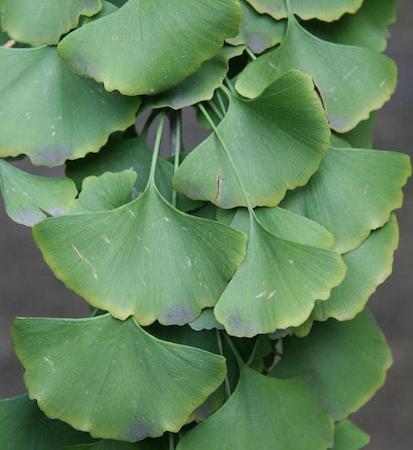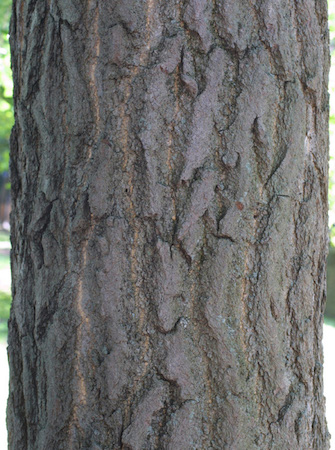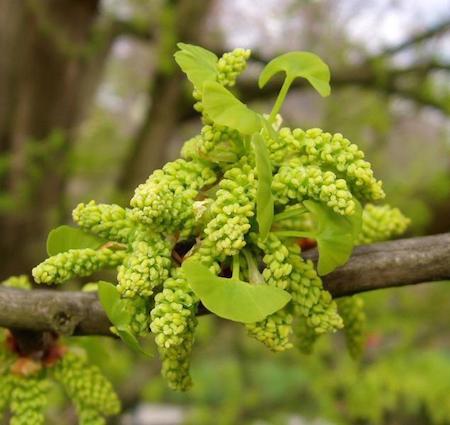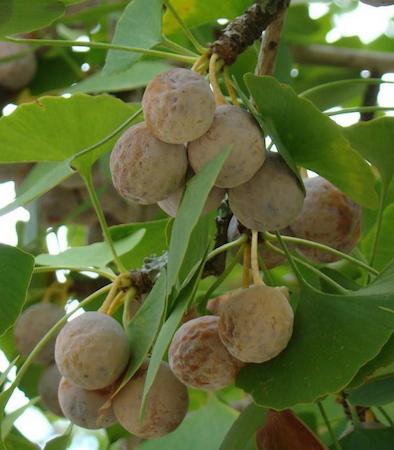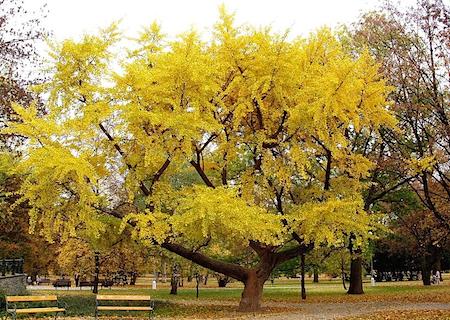Gingko
Specifications
- Also known as: Maidenhair tree
- Latin (scientific) name: Gingko biloba. Biloba is Latin referring to the two (bi) distinct lobes (loba) of the leaf.
- Life expectancy: 2,000+ years
- Height: 90 feet
- Circumference: 15 feet
-
The height and circumference measurements listed here are for the largest-known ginkgo tree in Atlanta. This tree faces Peachtree Street at the High Museum of Art.
-
Special characteristics:
This tree has a leaf structure you won’t find in any other tree. It looks like a fan. Go pick a leaf off this tree and take a closer look. It’s really unique. Swirl the long leaf stem between your thumb and index finger. It’s like twirling a little flag. The leaves turn a brilliant yellow in the Fall. You can’t miss them. But there is more to these flamboyantly colored leaves.
The tree drops all of its luminous leaves in a period of a few days or even a few hours. The leaf drop is not determined by wind, either. They just suddenly drop. You end up with a lovely carpet on the ground that is unforgettable. Take some time to walk under the tree. Thrash your feet around and watch the colors fly! These leathery leaves feel soothing to bare feet, so kick your shoes off. Grab a handful if it is a breezy day and toss them up into the air. You’ve just created your own little light show as the leaves drift back to the ground.
This species of tree is very tolerant to drought and difficult growing conditions. A number of municipalities plant them along streets. They do well in polluted environments.
-
Annoyance factors:
This tree has an annoying quirk and it is gender based. The female tree produces a squishy fruit that smells like rotten cheese. It sticks to the shoe too. So that unpleasant odor can make an appearance inside your household if you aren’t careful where you put your feet while the tree is dropping its fruit.
How do you circumvent this problem if you are thinking about planting one of these trees? Go to a reputable nursery and ask for a male tree. Mistakes can happen, however. Fifteen years after the purchase of this tree, it might start producing fruit. That’s when you know you have a female ginko tree.
-
Fun Facts:
This is the most ancient tree as far as dated fossil remains. There are fossils of this species dating back 200 million years! The ginkgo was once native to North America. It became extinct here due to climate change, though it persisted in Asia. (It can be found in ancient Asian temples.) It was reintroduced to North America in 1784.
The leaves press exceptionally well. Collect them when they are in prime golden yellow about a week before they drop. The color seems to hold very well and the leaves are thick and leathery. They won’t crumble very easily.
The gingko tree is medicinally very important. Extracts made from the leaves and fruit have been used for circulatory problems and memory problems.
-
Photo Credits:
Bark: Steven J. Baskauf, Vanderbilt University Bioimages
Leaves: Robert Vidéki, Doronicum Kft., Bugwood.org
Flowers: Jan Samanek, State Phytosanitary Administration, Bugwood.org
Fruit: Franklin Bonner, USFS (ret.), Bugwood.org
Tree in Fall color: Jan Samanek, Phytosanitary Administration, Bugwood.org

